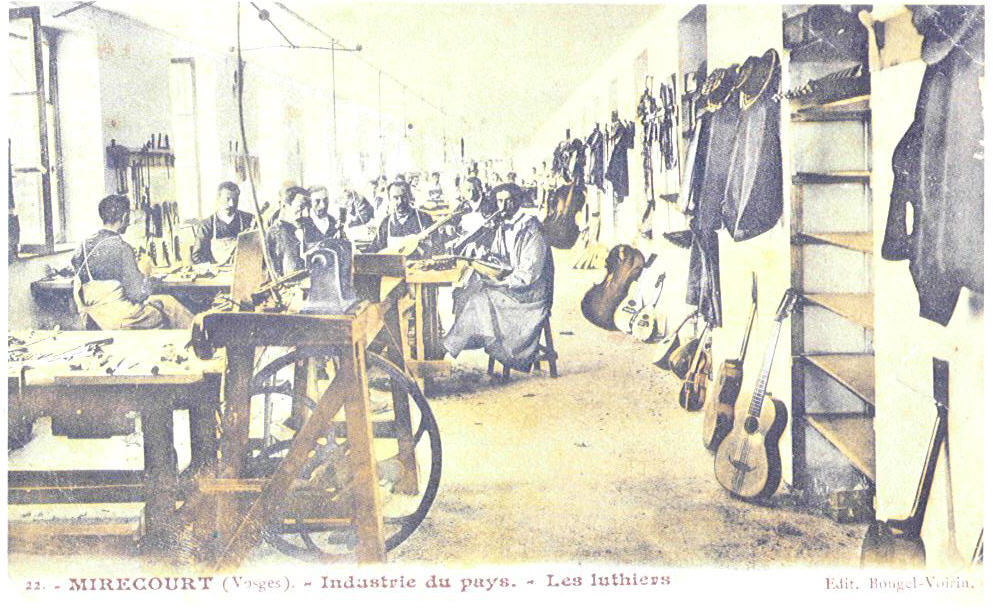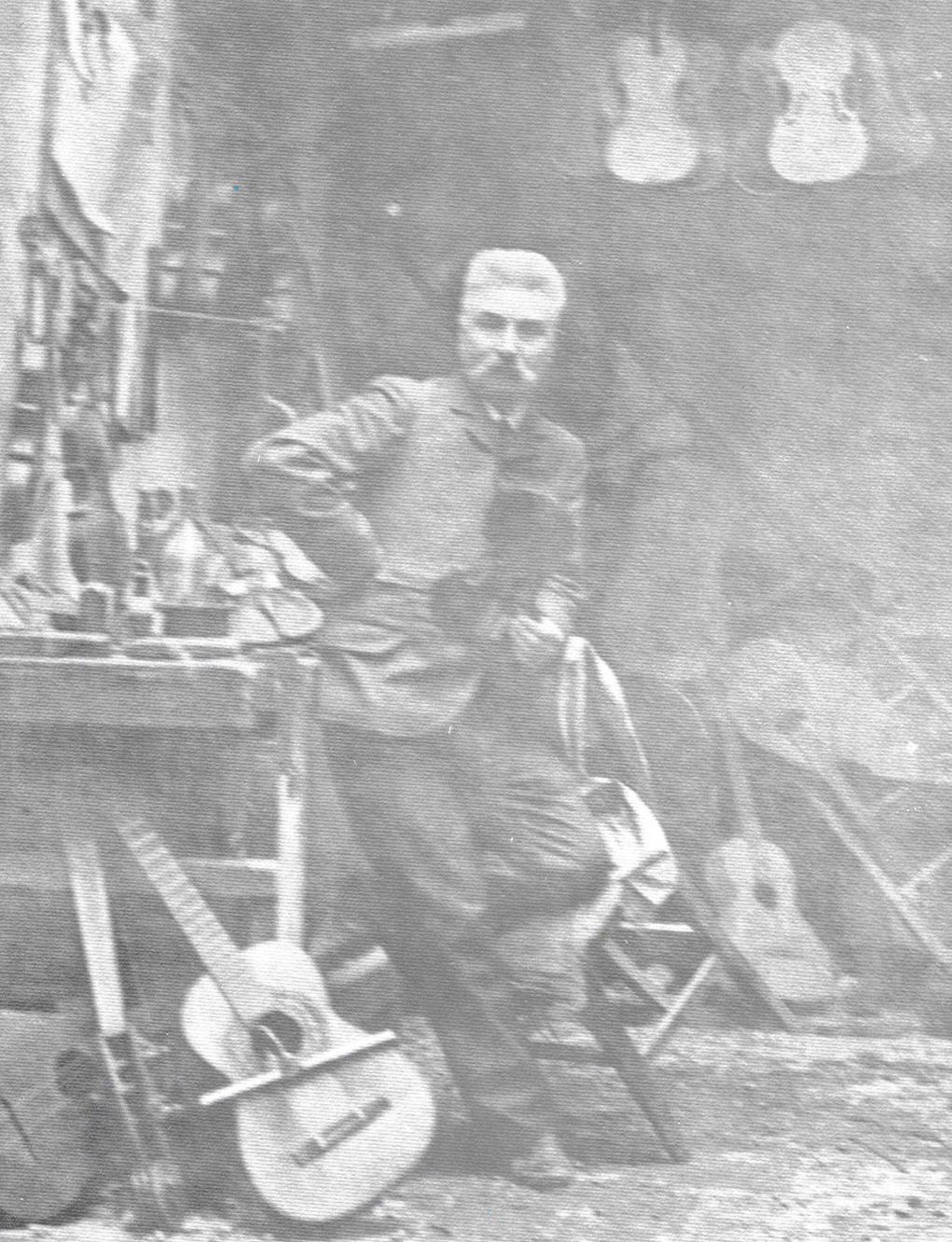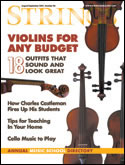 |
|
| |
|
When you play your Prodigy string
instrument, youíre connecting with nearly five hundred years
of tradition.
|
| |
 |
The history of violin-making is rich and fascinating. Hereís a brief overview of the last hundred years of the violin-makerís art.
|
| |
|
|
The 1800s.
|
| |

|
In the mid to late eighteen hundreds, the
industrial revolution was well under way. This brought a rise
of urban culture, increased buying power for the new middle
class, and an expansion of international trade. Music
was now becoming popular with ordinary people
. Gone were
the days when music existed only as entertainment for the noble and
wealthy classes.
Several different instruments grew in popularity. There
were mechanical devices, like player pianos, various designs
of music boxes and other basically self-playing instruments.
More traditional instruments like pianos began to appear in
more homes. The violin in particular
was the most popular instrument for
musicians. However, there was already a shortage of
quality string instruments.
The great master instruments from the 17th and 18th
century were already collectible, and therefore all but
unaffordable to would-be musicians.
Several savvy violin-makers came upon the solution.
They created master workshops where they trained
specialist wood carvers to do much of the
time-consuming work. The masters trained the workers, oversaw
their labors and were directly involved in the assembly and
varnishing of the instruments. By putting much of the work in
the hands of specialized wood-workers who were not highly paid
masters, they were able to create
high-quality hand-made string instruments at
a cost people could afford. This was a major change
for violin-making in particular and the world of music in
general.
For previous generations, only a small caste of
professional musicians had access to instruments, which were
often provided by their employers. Now nearly everyone
could afford to buy an instrument and learn to make
music. This resulted in a surge in popularity of classical
music in Europe and abroad. European workshops continued to
make string instruments and bows in this manner up until the
middle of the 20th Century. |
| |
|
The
1900s.
|
| |

|
The aftermath of World War
II brought
about major changes to Europe and therefore to the world
of violin-making. Entire towns were destroyed, taking many
workshops with them. Europe itself was rearranged, forever changing the
way people were able to interact and carry on business.
At this time automation and mechanization were
beginning to appear in many industries when it had
never been seen before, like violin-making. After the Second
World War, essentially all student string instruments were
largely machine made, with hand-work comprising little or none
of the process. This means that nearly all musicians
who began studying after the war started on machine-made
instrument. Generations of string players never knew
what it was like to play a high-quality instrument unless they
became advanced enough to invest in an expensive older
model. |
| |
|
The end of the
20th Century.
|
| |
|
In recent decades, many factors have revived the craft of
violin-making. A very important part of this change has come
from the huge success of the Suzuki Method with regard to string
instruments. The next big change to affect the world
of violin-making was the opening of China to commerce
with the west.
In 1992, Qian Ni, who came to the United States from
China to study music, founded Eastman Strings. His company
bought instruments from Western-trained violin-makers in his
home town in China. But before long, he and his colleagues saw
that a different approach was needed, an approach that
followed the pattern used so successfully in Europe a century
before.
Ni hired a group of established Master violin-makers,
and with their help, built a large violin workshop devoted to
the handcrafting of string instruments. This was one of the
first such workshops the world had seen since the first half
of the 20th century. In the short time since this workshop was
created, the reputation of Eastman Strings for the tonal
quality and craftsmanship of their instruments has become a
worldwide standard. |
| |
|
Prodigy Instruments is born.
|
| |
|
When Robert Kurz, founder of Prodigy, was
searching for a partner to make his high-quality student
instruments, Eastman was a natural choice. Today, the
instrument and bow-making shops that build Prodigy
Instruments, under an exclusive agreement with Eastman
Strings, operate in precisely the same manner as those in late
19th century Europe. They use virtually no power tools aside
from band saws used to cut out the necks. Chisels, knives,
gouges and scrapers in the hands of gifted craftspeople are
the only tools used to create your Prodigy Instrument.
History has taught us that the traditional way of
making string instruments results in a better value for
student musicians.
See why Prodigy Instruments are
so affordable.
Now that
you have learned a bit of the history of violin-making, see
what all this history has led to. Get more specific about Prodigy
Violins !, Violas !, and Cellos
!. |
|
|
|
|
|
|
| |
| "These instruments are extremely well made
and have a beautiful tone quality. I would recommend these violins
to any of my fellow performers, teachers, and students." -Cindy Crumb
Orchestra Teacher
Fairfax, Virginia |
| |
| "As a teacher of high school students,
I am always looking to find excellent instruments for a good price.
I can recommend instruments of this quality without reservation.
In fact, I'll be using one myself for touring and some of my own
performances."
-Eric
deWaardt
Violist National Symphony Orchestra |
| |
|
"Excellent playability, mellow tone, subtle response, and
dynamic projection make this outfit a definitive favorite with
our review team..."
-Strings Magazine
Review
of Eastman Strings - maker of Prodigy Instruments
|
100% Satisfaction
Guaranteed for the first 7 days of ownership. If you're not fully
satisfied, return the product in new condition and receive a full refund with no questions
asked. Please click here to for the full return policy.
Lifetime Warranty! |
|
 |
 |





